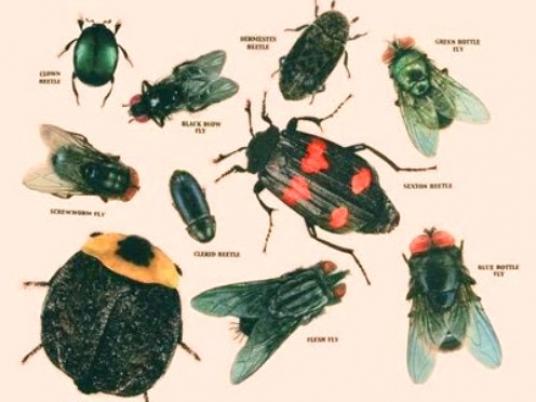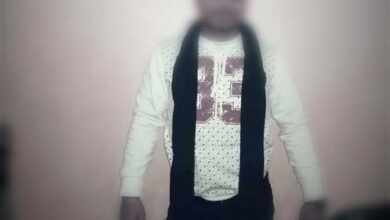
"I will not let the blowfly know your whereabouts" — this Egyptian proverb is used to threaten to kill someone and hide the body in a place that no one could ever discover, even the blue fly, which feeds on decaying tissues.
"Most people ignore that this proverb has a scientific basis," explains Ali Rasmy, the leading Egyptian forensic entomologist who teaches at National Research Center. An entomologist is an insect specialist, while a forensic entomologist uses his knowledge of insects that inhabit decomposing remains to aid legal investigations.
"The blowfly is the most accurate witness on physical and psychological torture and all types of crimes,” stresses the scientist, who is also the creator of forensic acarology, a discipline that uses mites and ticks to solve crimes.
The blue fly is an incredible tool to determine an individual time of death, because this fly lays eggs or live larvae in the corpse at certain stages of the decay, giving precious information to forensic doctors.
Insects have also proven extremely helpful in torture cases, acting as witnesses and providing a vast array of clues to prove what kind of torture was used against a prisoner.
A three-day conference entitled "International Challenges in Forensic Medicine" was held in Khartoum last week, attended by Rasmy and Sherein Ghaleb, forensic doctor and undersecretary of International Rehabilitation Council for Torture Victims, along with most forensic medicine experts from Arab states.
They discussed how to document torture practices and debated how to define the time of death and the motives for the practice of torture.
According to a report by the Human Rights Center for the Assistance of Prisoners, 1,124 cases of torture were monitored in Egypt during the last two decades. Multiple kinds of torture, both physical and psychological, were repeatedly used, including cigarettes burns, electric shocks and sexual abuse.
An entomologist, a forensic doctor, an investigator and lawyers compose the team in charge of unveiling torture cases, assassinations and ambiguous crimes.
"Insects have the capacity to shed light on torture crimes," explains Rasmy, who stresses that in prisons and detention camps, the prisoner's hands are tied behind his back, which makes the prisoner incapable of repelling repeated fly strikes for days on end.
Laying eggs in the body’s open wounds or cavities — nose, ears or mouth — the fly causes ulcers, nasal and optical myiasis, a general term for a pathological infection caused by parasitic fly larvae feeding on living tissues.
All these gruesome wounds act as evidence that the person had been questioned under inhumane conditions.
"If this person had underwent a regular interrogation, his hands would have been free and he would have been able to defend himself and chase the fly and prevent it from laying eggs in his flesh," Rasmy explains.
The blue fly attacks the tissue of the body hours after death, carrying numerous mites, microscopic insects that have the same cycle of life as the blue fly.
The blue fly can also elucidate rape crimes. In one particular case, Rasmy said, traces of the aggressor's DNA were discovered in the larvae that had started attacking the dead body of a girl, which helped identify the culprit and solve the case.
Through the life cycle of the insects, an entomologist can define the time, the place and the means whereby the crime was committed. Each insect attacks the victim after specific hours of death. The blue fly colonizes the body a few hours after death, then is followed by other insects, each of them attacking the victim at specific stages of the decay.
The insects' task is not confined to unveiling crimes of torture or abuse. They are also extremely useful in narcotics trafficking and smuggling. All insects are studied and classified — they belong to precise habitats that help authorities trace the traffic to its source.
The entomologist can also know by studying the species of insects crawling on the body if the victim was killed somewhere else and moved to this specific location or killed on the spot.




